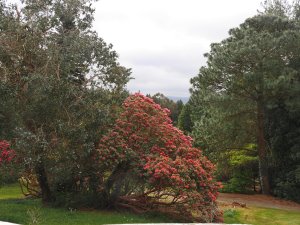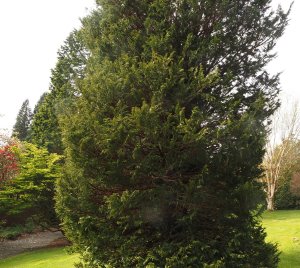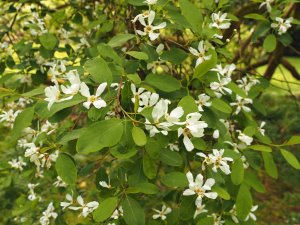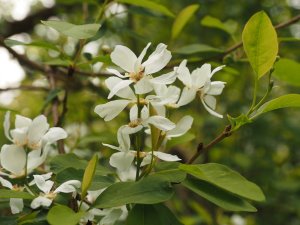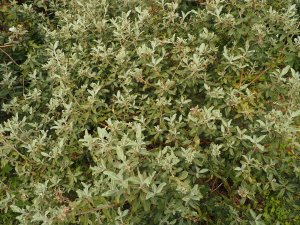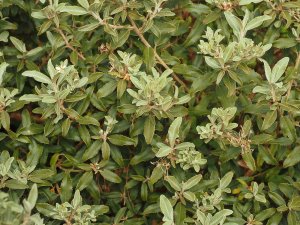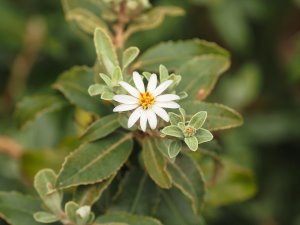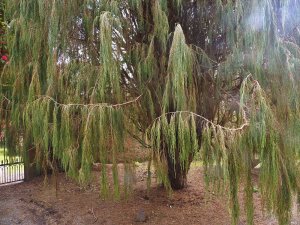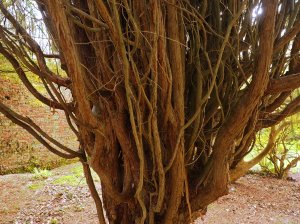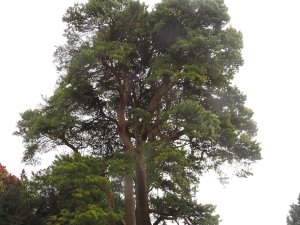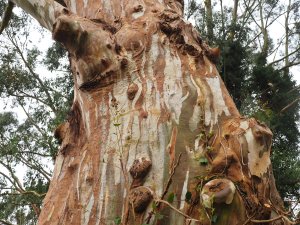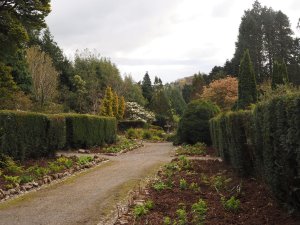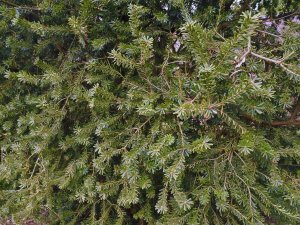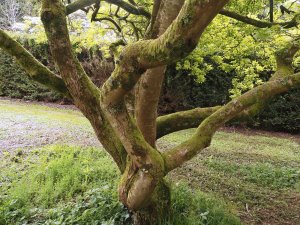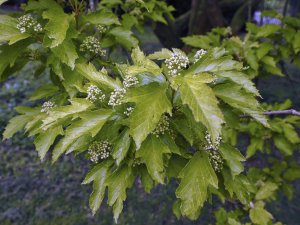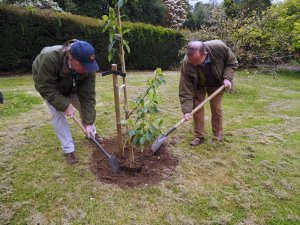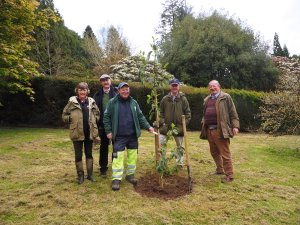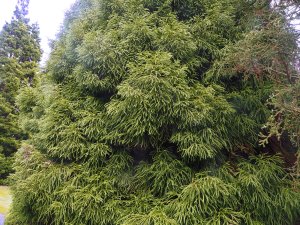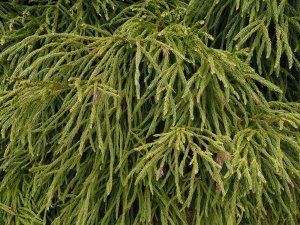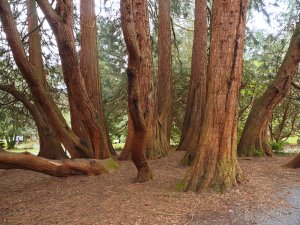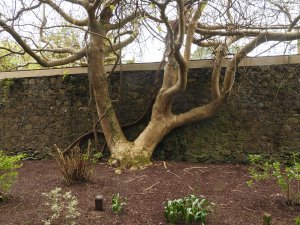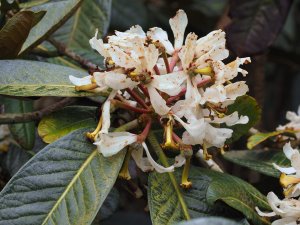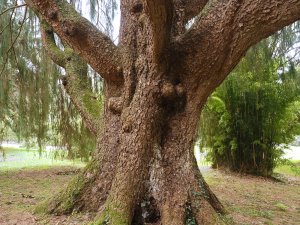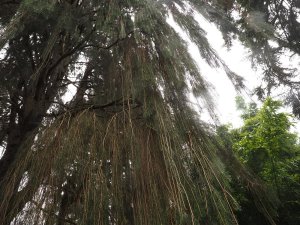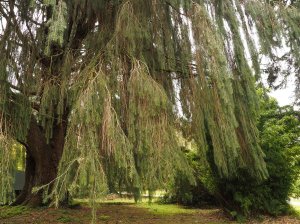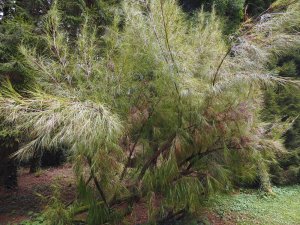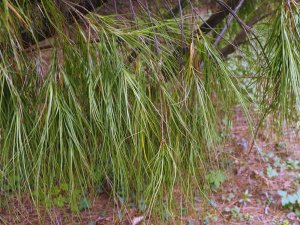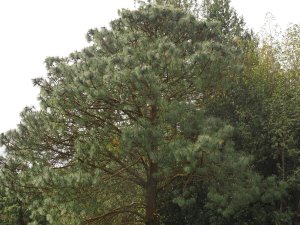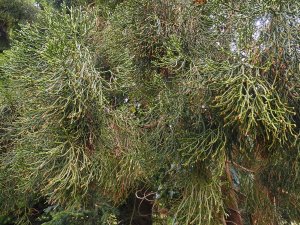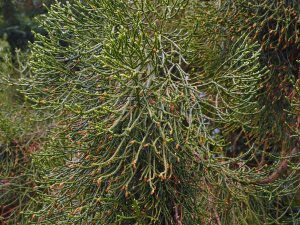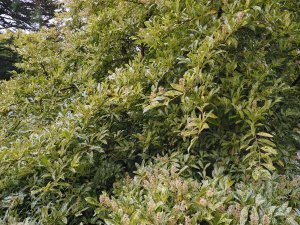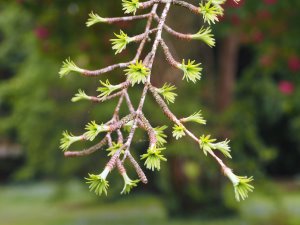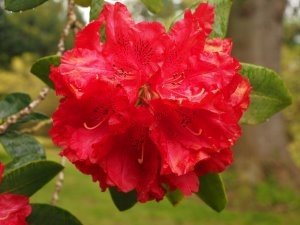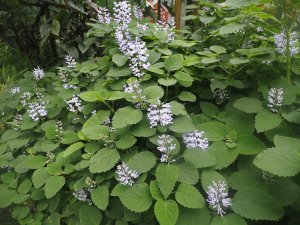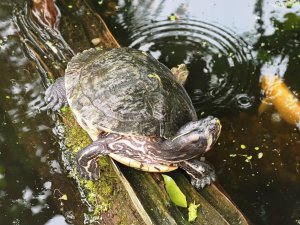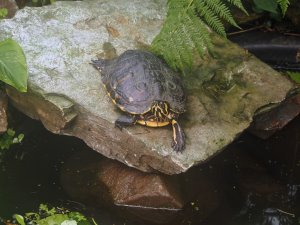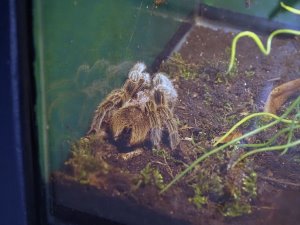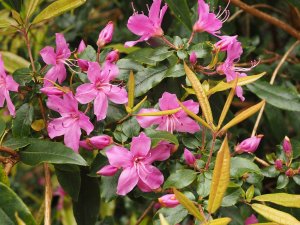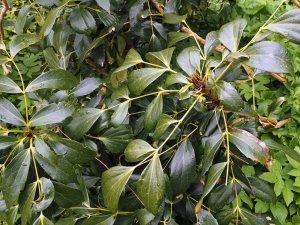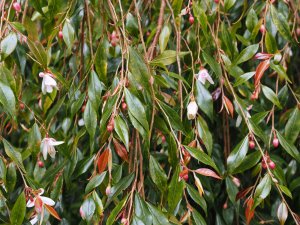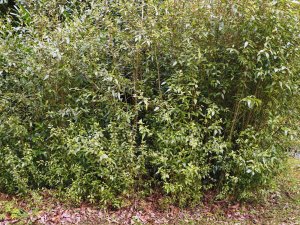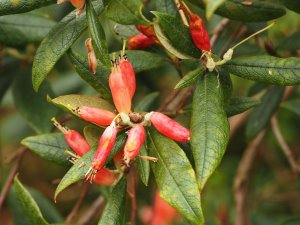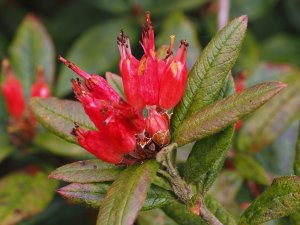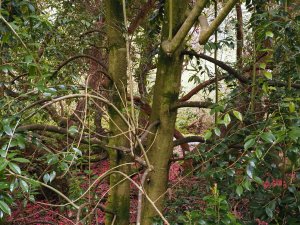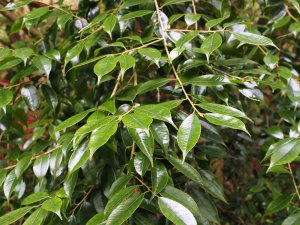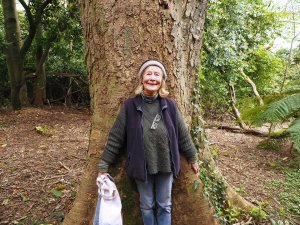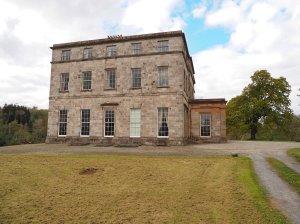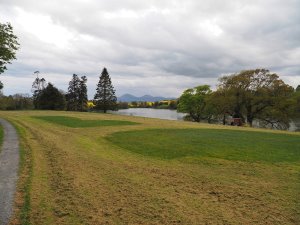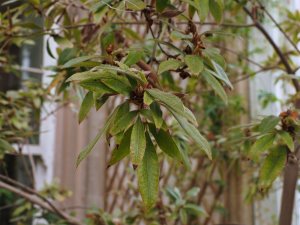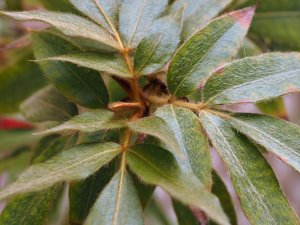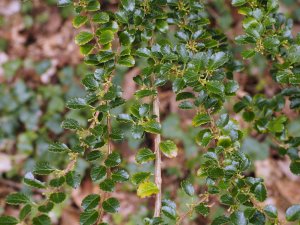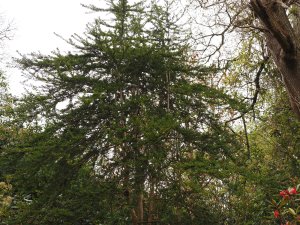A day at Castlewellan and then on to nearby Seaforde
The view from the Terrace towards the mountains and sea.
The view along the Terrace.
Libocedrus formosana (Calocedrus formosana) which we have recently planted.
Exochorda racemosa (grandiflora) with large single flowers.
Olearia x matthewsii was a new species to me.
Juniperus recurva ‘Castlewellan’ – a 150 year old tree – one of two which we saw.
Only the second time I have ever seen Debregeasia longifolia and this is far and away the largest clump. Yellow mulberry-like fruits which I have yet to see. Very old flowers in profusion. The name seemed unknown to the garden team.
Their Cephalotaxus fortunei appears to be three quarters male and quarter female. Perhaps two plants grown together? Difficult to tell with such a huge shrubby clump. This is not really a tree.
The record size Pinus sylvestris ‘Aurea’ which had lost some of its winter yellowness.
Eucalyptus urnigera with impressive bark and much older than you would expect.
The view down the slope – herbaceous borders recently split and redug.
Banksia marginata growing away quite happily outside up to 15 feet.
Oleria [?]
Could this be Viburnum trilobum which Hilliers now calls Viburnum opulus var. Americanum. We saw this at Rowallane as well but the two plants grew quite differently.
We planted a tree in honour of our visit! Never had this honour before! A large Magnolia doltsopa for which Thomas and I did the honours while the band played.
The full team after the planting.
Cryptomeria japonica ‘Spiralis’ which I now have cuttings of (from Clandeboye).
The Sequoiadendron giganteum plantation – never seen anything this vast or well cared for.
Their 1869 planted Magnolia campbellii on a wall.
Alwyn with a picture from c.1850 of the Sequoiadendron plantation starting out. The Annesley family who created the garden were early enthusiasts of photography.

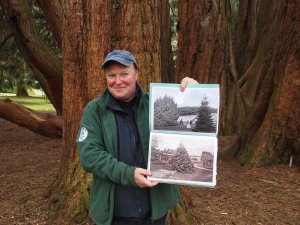
Another Rhododendron sinogrande with split flowers as we saw at Rowallane. Not a freak but a distinct clone which could and should be named even if it is rather horrible.
Rhododendron thomsonii – a new plantation and we saw another group at Seaforde.
The record Picea smithiana (West Himalayan Spruce). Breathtaking! Definitely something we need to start growing.
A novelty conifer which is related to the heather family as we could see from its seeds – Dracophyllum aff. sinclairii. The rarest plant we have seen this week and one of the most peculiar. Tom Hudson grows it but I have not yet seen it myself at Tregrehan.
Pinus hartwegii looked better to me than P. montezumae especially with the flower cones coming out.
Athrotaxis sempervirens is the only one of the 3 species of Athrotaxis not yet growing at Caerhays.
Prunus laurocerasus ‘Marbled White’ as we know it is actually a Castlewallan sport and is now again recognised under that name. Very little reversion to be seen on the original plant.
The oldest and largest Pseudolarix amabilis in the UK is on its last legs after 170 years.
Rhododendron ‘Bagshot Ruby’ (from Slieve Donard).
Labelled Embothrium coccineum longifolium – redder flowers with longer trumpets than I have ever seen anywhere else on this trip. The IDS are currently rewriting Embothrium for Trees & Shrubs. Is there one species of Embothrium or several sub-species?
Berberis francisci-ferdinandii a completely new species to me. A very large growing shrub up to 15-20 feet.
Now we move onto nearby Seaforde and a tour with Lady Anthea Forde and her son Finnian. At first we enter the heat of the butterfly house where there is a tropical species of Salvia (no name). Seaforde opens from Easter to 1st October and had 27,000 garden visitors last year. Peacocks everywhere. Terrapins or turles?
A tarantula spider in repose – one of 3 on view.
I suspect this is a very good form of Rhododendron leptothrium or it is a very good form of R. oreotrephes?
A large Mahonia gracilipes doing well.
The maze in the walled garden created in the late 1960’s with Carpinus betulus. We did not try it out.
Is this a pendulous Camellia transnokoensis? Never heard of this but we did see a huge plant later with no drooping branches.
Rhododendron sanguineum I think?
Hoheria lyallii self-seeding itself everywhere in vast quantities.
Quercus pannosa was Thomas Methuen-Campbell’s view on this unidentified young oak.
Very good red forms of Rhododendron spinuliferum.
An Ilex species which I need to try to identify.
Lady Anthea with her favourite tree.
The house and views across the lake. The stables connect with the house via a still very usable underground tunnel. In the old days the staff arrived unseen.
In the portico was the extraordinary rare Eucryphia jinksii from Queensland. A species of Eucryphia which I had never previously heard of. We had hoped to see the equally rare Eucryphia wilkei at Castlewellan but forgot to ask.
A (?) Pakistani holly to identify with tiny leaves which grew just beside a fine Weinmannia trichosperma. Perhaps Ilex nothofagifolia
